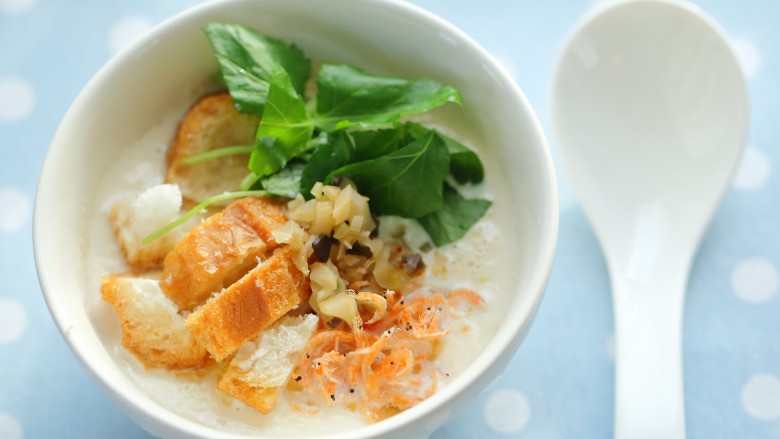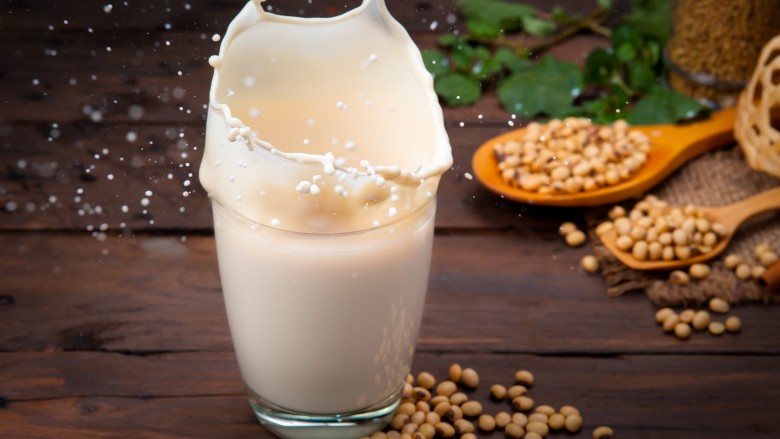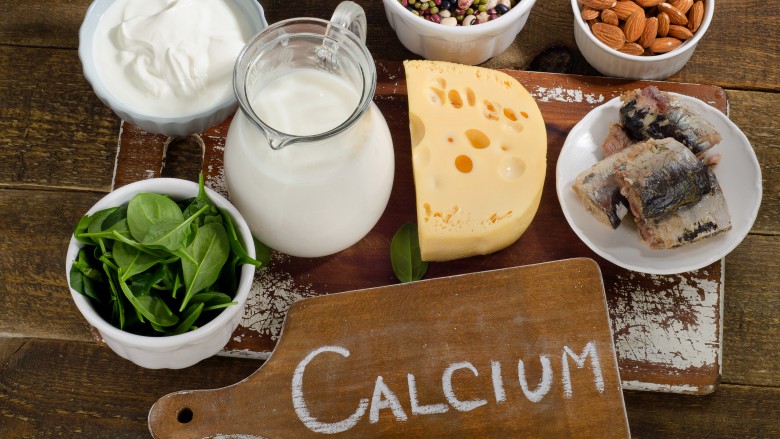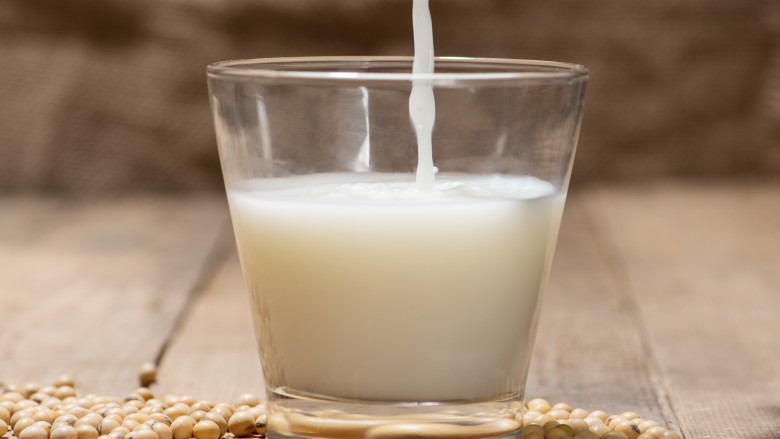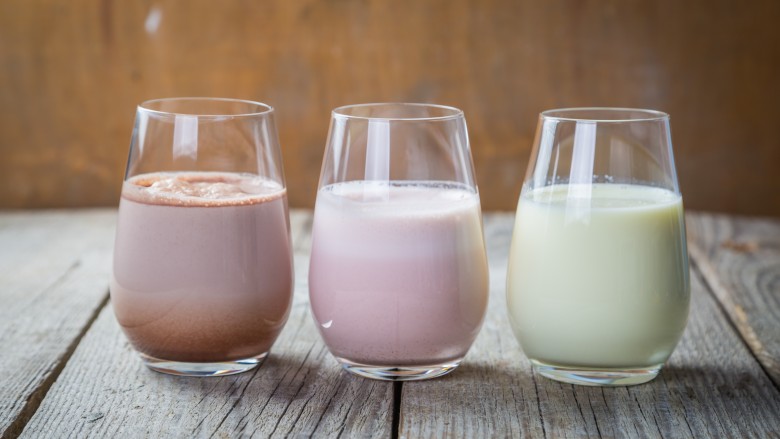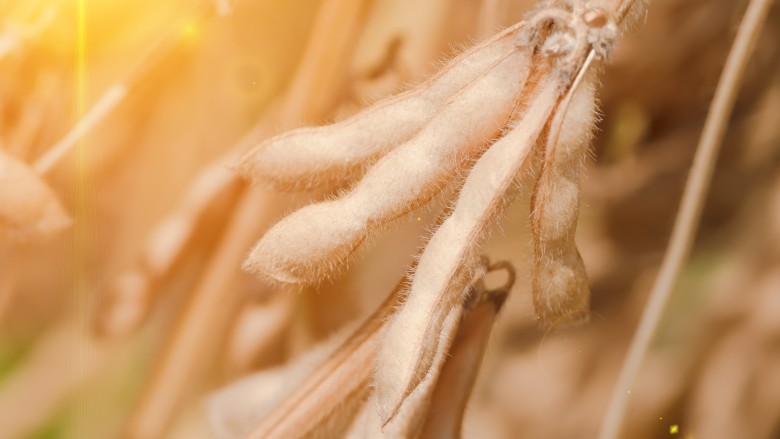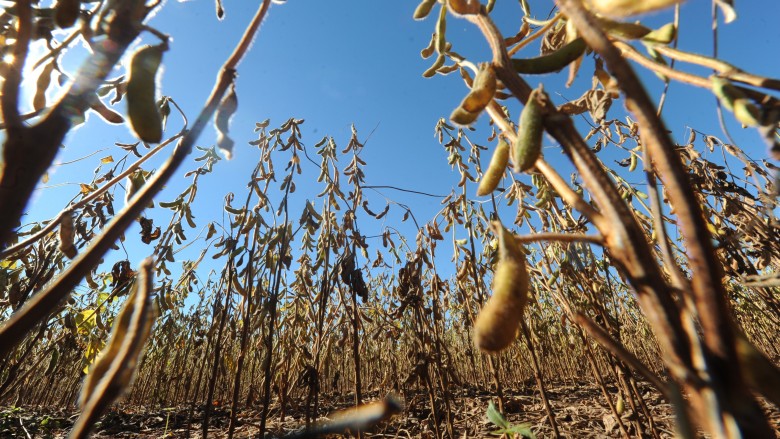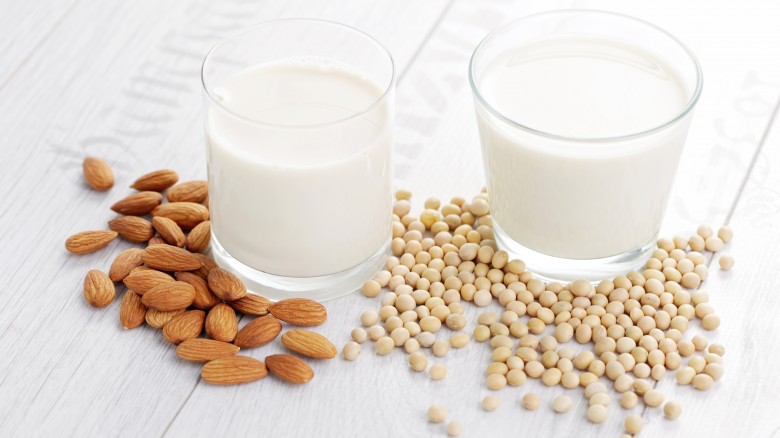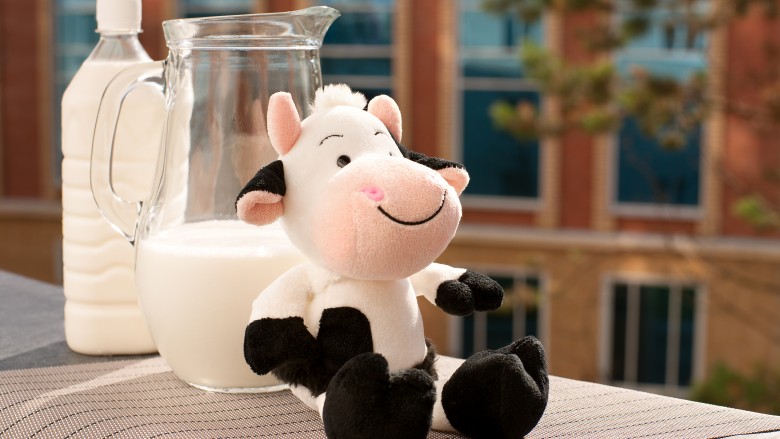Everything You Need To Know About Soy Milk
Gone are the days when choosing milk just mean deciding between skim and two percent. Now, you're confronted with a whole list of options when it comes to your morning milk, and soy milk is one of them. While it's definitely not a new thing for the rest of the world, the West is still learning about the benefits — and the disadvantages — of this milk alternative, and if you're wondering what you need to know, you're not alone.
It's got a surprising history in Asia
Soya has been a staple crop in China since somewhere around 3000 BC, and it was so crucial to the ancient way of life that it was called one of the five sacred crops. Early farming manuals detail everything that was needed to know about maximizing a harvest, and it's no wonder. Soy milk was — and still is — a staple of countless diets, although the fresh stuff isn't just preferred to what you pick up at the grocery store, it's the only way to go for many people.
Unsweetened soy milk is still a popular breakfast drink in Asian countries, and it's a crucial ingredient in traditional breakfast dishes like hot and salty soy milk soup.
It's only since the 1980s that boxed, commercially produced soy milk has become available in Asia, and it's so different from the traditional, homemade variety that it was given a different name: dou nai. It's long been prized for its lactose-free qualities, especially in an area of the world where a huge percentage of the population is lactose-intolerant. That makes it a long-known secret that has only become popular in the Western world relatively recently, at least, in the commercially produced form.
Soy milk's benefits
One of soy milk's biggest benefits — and the least debated — is that it's a legitimate alternative to anyone who is lactose-intolerant or sensitive to lactose. While those people might not be able to stomach a glass of cow's milk, soy milk is completely fine. There are plenty of other benefits, too, a poplar one being that it's low in fat. It's comparable to 2 percent milk, and it also has almost no saturated fats. It's cholesterol-free, too, which can be a huge bonus to anyone who is watching their numbers. Another benefit? It's high in protein.
There have also been studies that point toward soy milk's role in promoting overall good health and fighting some of the most dangerous conditions people face as they age. Soy milk contains a high amount of isoflavone, which is crucial in warding off prostate cancer, and the antioxidants in soy milk help fight other types of cancer, too. Studies have also looked at the connection between soy-based isoflavones and the development of osteoporosis, and found that bone density increases — and cases of osteoporosis decrease — with the addition of soy to the diet. There have also been mixed results from studies that looked at whether or not those soy isoflavones had a positive impact on women going through menopause, and they seemed to find that for some people, it helps alleviate things like hot flashes and insomnia.
Soy milk's calcium content
One of the biggest concerns for those switching from dairy milk to soy milk is whether or not they're going to be getting enough calcium. For most adults, the daily requirement of calcium is 1,000 mg, and that goes up to 1,200 mg after the age of 50. Dairy milk typically contains between 290 and 300 mg in a serving, while plain, all-natural, unfortified soy milk only has about 10 mg. Most commercial types of soy milk fortify their product, though, and that means that you're probably getting between 150 and 300 mg of calcium per serving of soy milk. (It varies greatly by brand, so be sure to check the labels.)
Calcium content is only part of the story, and no matter how much it contains, it's not going to do you any good if your body isn't able to absorb it. Fortunately, studies have shown that the type of calcium carbonate that's usually added to soy milk is just as readily absorbed by the body as the naturally-occurring calcium that comes from the milk of grass-fed cows. If worry over calcium is still keeping you from making the switch, you should also know that there's a ton of other foods that contain all the calcium you need for the day, including things like dried figs, blackstrap molasses, kale, oranges, almonds, and oatmeal.
Links to breast cancer
Soy products have often been mentioned in conjunction with breast cancer. That's because of soy's isoflavones, which have been suspected to mimic estrogen and, in turn, speed up the progress and development of breast cancer. Studies have been very, very mixed, and seem to show that the relationship between soy and certain types of cancer is incredibly complicated.
The Mayo Clinic took a close look at the relationship between soy and breast cancer in 2016, and they found that in most cases, one to two servings of soy every day doesn't increase the chance of developing breast cancer, and might even reduce it — but only in some cases. It all comes down to the different estrogen receptors in the body, and studies seem to show that soy lowers the risk of cancer when it's associated with some receptors, but has no effect on others. In 2017, the results of a study that involved 6,235 breast cancer survivors seemed to find that a high soy consumption was linked to a longer life after their diagnosis. That was especially true in the case of women who were diagnosed with a type of cancer that didn't respond to hormone therapy, and that study supported others that found post-cancer consumption of soy made for a better, healthier life. While scientists are still hesitant to call soy and its products a wonder food, they do say that previous belief in the dangers of soy seem unfounded, and that it might even be beneficial.
It's easy to make at home
Whatever reason you have for using soy milk, it's likely you're still somewhat daunted by all the ingredients and additives listed on the label. Fortunately, for anyone who's looking for something not only a little more pure but guaranteed to be free of all that extra sugar, soy milk is surprisingly easy to make at home. Serious Eats has this recipe for making your own soy milk, and it only calls for a cup of dried soybeans and some water. Pureeing the beans and the water will give you your base, and then it's just a matter of straining out the soybean pulp and boiling the remaining mixture. The boiling process will get rid of the flavor of the raw beans, and it'll leave you with pure soy milk that'll keep in the fridge for a few days.
Even better is the chance to make some flavored soy milk that can totally change the taste of your morning coffee... or anything else you choose to add it to. Serious Eats recommends adding things like almond extract, vanilla, or honey to give it a sweeter taste that's more desirable for any number of palates, but when it comes to flavors, the sky's the limit. Kiran Tarun has this recipe for a tasty cinnamon and honey soy milk, and you could also add a dash of coffee syrup, chocolate, or anything else you might spiff up your coffee with.
Don't throw away that okara
If — and when — you start making your own soy milk, you'll find that the process is going to leave behind some of the soybean pulp. Your first instinct might be to throw it away, but there's no reason to. It's called okara, and it's actually a bland but nutrition-packed byproduct of making soy milk. It's high in fiber and protein, low in carbohydrates, and it turns out that there's all kinds of things you can do with it.
If you're so inclined, you can actually dry the okara that's left from your soy milk production and grind it into a flour that acts pretty much the same as any wheat flour. The Messy Vegetarian Cook also has a ton of ideas for using it, too. If the waste has kept you away from making your own soy milk, there's absolutely no reason to stay away now!
Soy milk's environmental impact
You've probably heard about the huge impact the cattle and dairy industries have on the environment, and that includes everything from the release of methane gas to the energy consumption it takes to do everything from raise cows to pasteurize milk and ship it in appropriately cold conditions. Soybeans have their own environmental impact, so which is really better?
Turns out, they both have their drawbacks, and according to an article from Slate, they almost even out in the end. When making soy milk commercially, there are many ingredients that need to be shipped in, and since fewer producers make it, the final product usually has to travel a lot farther to get to consumers, too.
If you're really concerned, your best bet is probably to drink soy milk — the homemade variety.
Soy milk and deforestation
When it comes to environmental impact of soy milk, deforestation is the other elephant in the room, so to speak. An increased demand for soybeans and their products means entire areas of rain forest — especially in Latin and South America — are being destroyed to make room for more farms, but it's not actually soy milk that's the problem.
According to the World Wildlife Fund, products like soy milk (and tofu) account for only a very small percentage of soybean use. Most of the world's soybeans don't even make it to our kitchens, at least, not directly. Soy's high protein content makes it a key ingredient in livestock feed, which means it's actually the meat industry that's mostly responsible for driving the soybean demand up to damaging levels. Soybeans are used in all kinds of animal feed, from feed used for animals like chickens, pigs, and fish to even dairy cows. While it seems a bit bizarre, fewer soybeans may be used in products like soy milk than in dairy milk, so if you're worried about deforestation, soy milk is probably the way to go.
Recognizing an allergy to soy milk
While soy milk might be a safer alternative for anyone who has a lactose intolerance, there are cases that it might cause an allergic reaction. According to the American College of Allergy, Asthma & Immunology, soy allergies are most common in children between 3 months and 10 years old, and while most outgrow them, this can also make it harder to diagnose.
Most common symptoms include things like nausea, congestion, asthma-like symptoms, an itching sensation in the mouth, and even the development of a rash or hives. According to the Mayo Clinic, diagnosing an allergy to soy can be made even more difficult by the fact that it can take anywhere from a few minutes to a few hours for symptoms to develop.
Rarely, a soy milk allergy can result in anaphylaxis, similar to what we think of happening in people who are allergic to nuts. It's not common by any means, but it is potentially life-threatening when it does happen, and it can be more likely in people who have other allergies or who have asthma. Dizziness, a drop in blood pressure, difficulty breathing, and a rapid heartbeat are all signs that there's something wrong, and they also say that if any of these symptoms do occur then it's time to call medical help.
There's a debate about calling it milk
If there's a raging debate in your house about whether or not soy milk should replace that good old standby of cow's milk, you're not alone. In 2017, Congress introduced a bill called the Dairy Pride Act, which would put an end to companies calling their non-animal-based products "milk," "yogurt," and "cheese." The argument is that it's basically misleading, and that allowing the FDA to step in and stop soy milk from being called soy milk "would protect the integrity of milk."
Since soy milk — and its other non-dairy companions — don't have the same nutritional content as milk that comes from an animal, it's claimed that actually calling it milk is misleading. Opposition to the bill argues that containers are clearly labeled and nutritional information is completely divulged, giving the consumer all the tools needed to make an educated purchase. The bill was introduced in January, and by March, groups were arguing that the right to call these products milk was nothing less than a First Amendment issue. Strangely, there is a bit of a precedent for the entire issue. In 2009, a lawsuit against Quaker Oats was dismissed largely because the courts found it insane. The suit claimed that the labeling of Cap'n Crunch's Crunch Berries implied that there was real fruit in the cereal, but the courts ruled that it was so obvious they were not, in fact, berries, that there was no misrepresentation.
Similarly, a 2015 lawsuit over Trader Joe's soy, almond, and coconut milk was dismissed because it was pretty obvious that no one was actually out in the field milking some kind of soy milk-beast. Bottom line? Read your labels!

